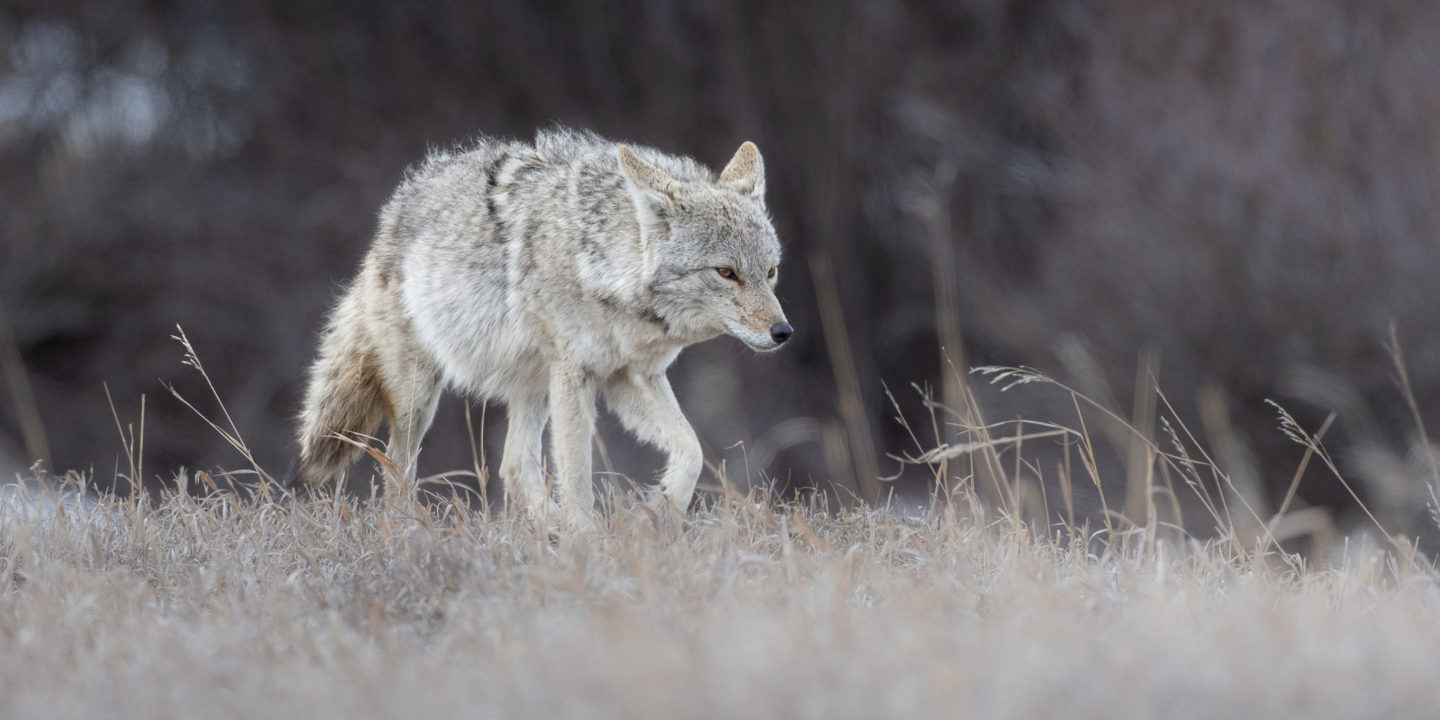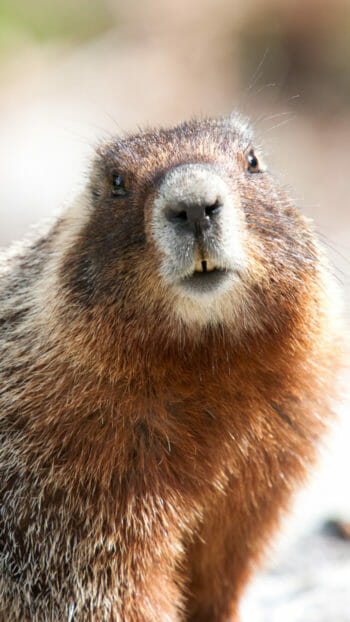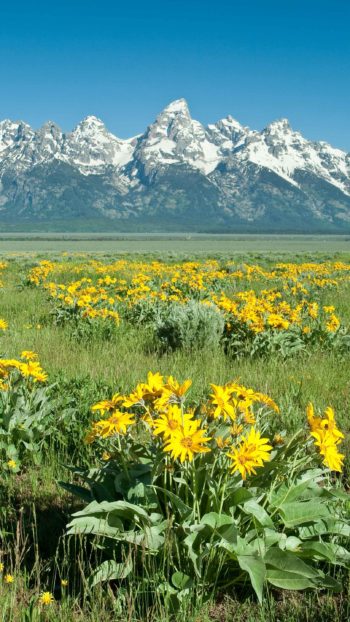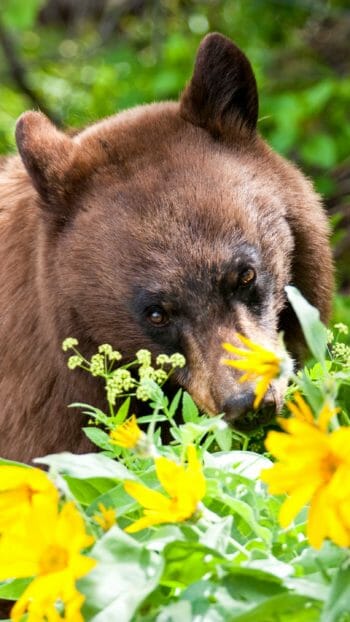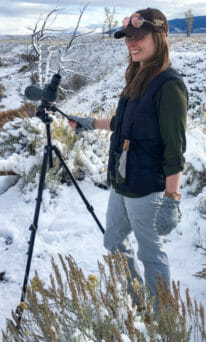When you enter the famed Jackson Hole, be prepared to be enchanted by the wild, rugged valley and surrounding majestic mountains. Marvel at the towering Tetons, breathe in the crisp, fresh air, and revel in the wide, sprawling landscape blanketed in untamed sagebrush, lush forests, and the meandering Snake River. Your senses come alive as you immerse yourself in pristine nature- a wild place that awe-inspiring species call home.
Thanks to the range of different habitats that scatter across the sprawling valley, there is a plethora of wildlife to be found. The forests house woodland creatures like foxes, mule deer, black bears, pine martens, and elk. The sagebrush steppes are the stage for pronghorn antelope, bison, grizzly bears, sandhill cranes, coyotes, and several hawk and falcon species. The rivers and lakes are the places to look out for beavers, otters, swans, pelicans, bald eagles, and moose. Due to the mountainous landscape, steep rock faces are a seemingly impossible playground for bighorn sheep, mountain goats, and pika. The ever changing topography and characteristic native vegetation promise a rich and assorted abundance of life where anything is possible!
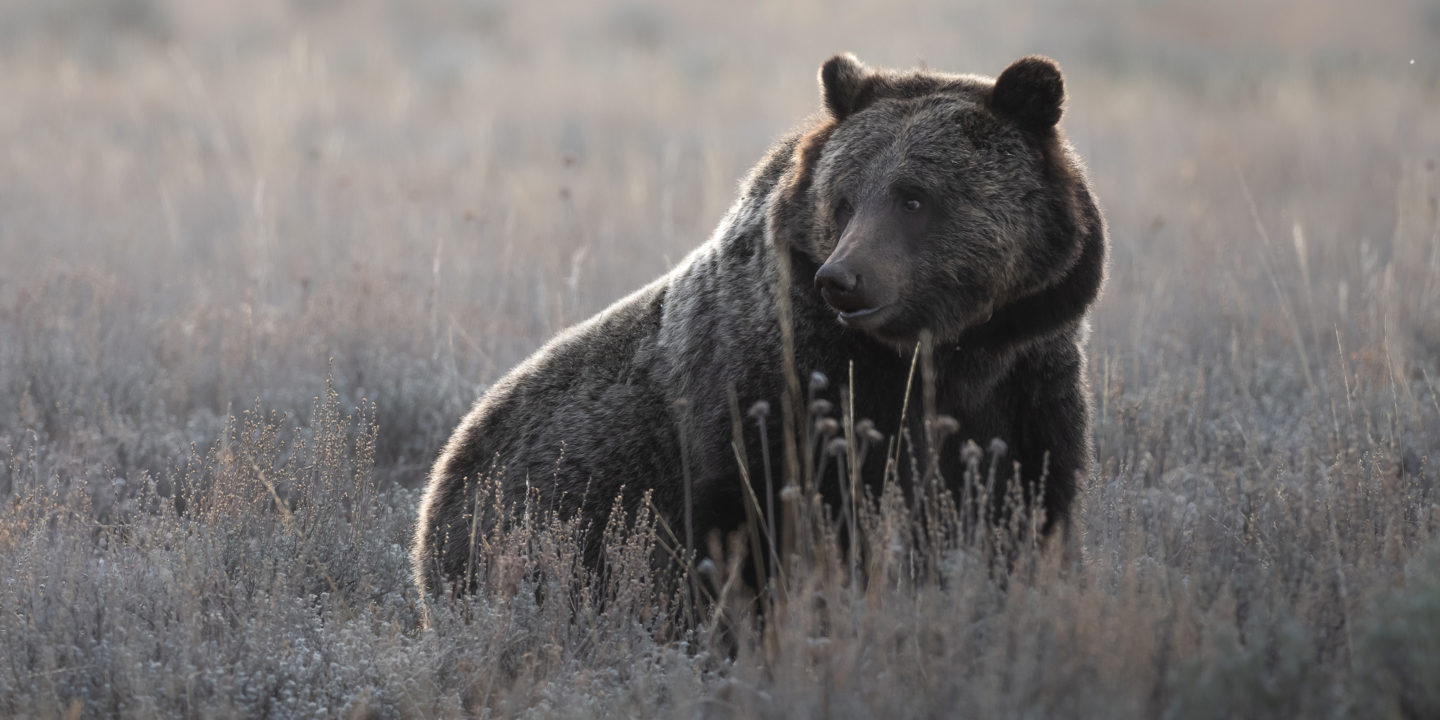
Summer Season
The summer months see the majority of visitors traveling to the valley in search of spectacular wildlife sightings. School vacations and warm, sunny weather draw people from across the country and around the world to relish in the spectacular hiking, refreshing lake and river adventures, and world class fly fishing. What almost every visitor shares in common is the sheer excitement at witnessing the wildlife roaming our public lands.
The summer season is considered to be between the months of May and October. Conditions vary greatly throughout these months with certain species appearing more commonly than others. In May and June, anyone with high hopes to see a grizzly will want to be in the park around this time. Bears are still low in the valley after emerging from hibernation, and this is their breeding season. Sightings are most common at this point! It is also the time where elk are plentiful, having their calves. Moose are calving also, and are more active during these cooler days than the proceeding hotter months. The majestic bald eagle is a frequent sight on the landscape year-round.
While July and August heat up the valley, the melting snow opens up high elevation habitats that many bears, moose, and elk take advantage of. They become far more scarce as they move up to higher ground for cooler temperatures and better grazing. Some do stay down in the valley, so sightings are still possible, but require a bit more luck! They move around far less in the midday sun, taking shelter in the dense forests to cool off. Bison and pronghorn are in their element during these months as they are far more heat tolerant than other species, staying active throughout the day. The bison rut is an exciting time to observe them- the bulls are actively pursuing mates, showing off with booming bellows and aggressively wallowing (rolling in the dirt) to impress the females. Hundreds upon hundreds of bison can be seen in the valleys, and even right on the roads!
September and October cools off again, encouraging more movement in our crepuscular species. The leaves on the cottonwood and aspen trees begin to turn gold, transforming the valley into a painted fall masterpiece. These are the months you should expect to hear the magical elk bugle through the trees, and admire the fully grown antlers. Moose are a common sight now, and bears become more visible again as they increase their feeding to pack on the pounds for the upcoming winter.
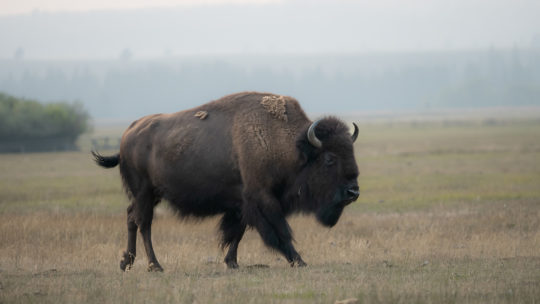
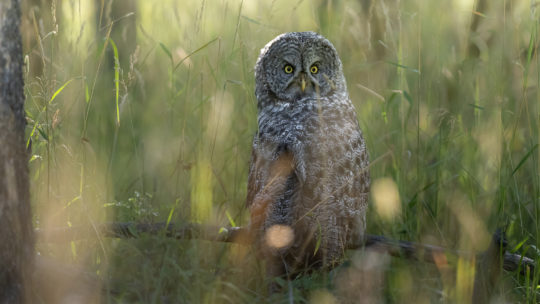
Winter Season
Many see winter as a time where the park shuts down, and the prime winter activities are skiing and cozying up indoors. While these are excellent options, there is still plenty of wildlife to be seen amongst the snowy landscape!
The beginning of the season is a time for animal migrations and settling into annual winter ranges. Elk migrate to the National Elk Refuge in the thousands from all over the valley, and even from as far as Yellowstone! Once the migration is over, you can see up to 8,000 elk on the open fields of the refuge. The National Elk Refuge was established in 1912 in order to provide the elk with protected wintering grounds. The development of the town of Jackson cut off their migration corridor to their usual winter ranges. With this access lost, they began dying off at a rapid rate. This prompted the establishment of the refuge which is still used today, and is an excellent wildlife watching experience between November and April.
Take a horse drawn sleigh ride into the refuge to get up close to the elk herds and learn all about their winter survival. Coyotes are frequently seen nearby, and foxes appear as an occasional treat hunting for rodents under the snow. Bald eagles perch in the bare trees, surveying for prey. Exploring behind the refuge around Miller Butte, you will see Rocky Mountain bighorn sheep- an animal that is an extremely rare sight in the summer months! These natural acrobats spend their time high up on steep mountain faces, but deep snow pushes many of them down to these habitual wintering grounds, providing an exciting wildlife experience for us.
You won’t see bears during these months as they are, of course, hibernating, but this is the season to keep your eyes peeled for the gray wolf. Elk are their usual prey, and hunting an animal of such great size is hazardous. In the winter months when the elk are at their weakest, this is when the wolf thrives. They utilize the deep snow to wear out the already weakened elk, making them easier to take down. The snowy backdrop is perfect for wolf watching as their darker coats are more visible against white than they are in the summer sagebrush.
Moose are a winter resident that loves the cold. Due to snow depth, they are forced to move out of their summer ranges and typically congregate around areas with vegetation still sticking up over the surface. Unlike in the summer months, it is difficult to drive around the sagebrush flats and not see a moose!
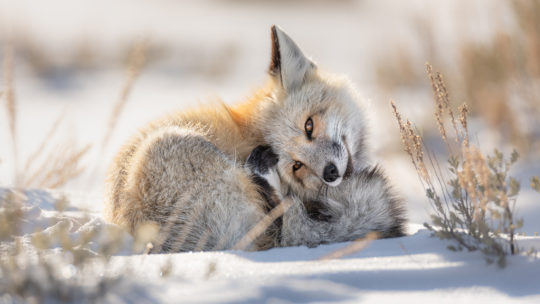
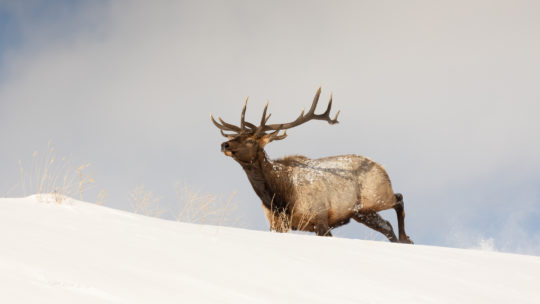
Best Way to View Wildlife in Jackson Hole, Wyoming
Grand Teton is a spectacular place to see wildlife, but it can be intimidating when you don’t know where to start. Unlike a zoo, there are no guarantees that you’ll see anything, but your odds go up when you have an understanding of the habits of wildlife and know the best places to look in the park. This is why taking a guided tour is one of the top activities that visitors book during their trip. Going with a local guide arms you with the expert knowledge of the ecosystem that will put you in the best position to encounter the incredible wildlife you were hoping for while learning all the fascinating facts about them that you never knew!
Summer Full Day Grand Teton National Park Tour
If you’re visiting in the summer, a full day Grand Teton tour will give you the best introduction to the park that you could ask for. Beginning early in the morning, your guide will pick you up from your place of lodging and you will be in the park within minutes. Setting out early gets you out in the field during the best possible hours of the day for wildlife movements as most of them are more active around sunrise. Your knowledgeable and experienced guide can adjust the route depending on what your personal interests for the day are. You will be amazed at the wealth of information provided to you, and you will come away with an appreciation and understanding of the area that you will never forget.
You will visit varying habitats such as woodlands, marshes, lakes and rivers, sagebrush flats, and grasslands. You’ll explore quiet side roads that most visitors wouldn’t find on their own. Your guide comes prepared with individual high-quality binoculars for your personal use, and a high powered spotting scope for long distance sightings, giving you the best view possible. Lunch is provided, and your guide will take you to a picturesque picnic spot for a delicious meal with a beautiful view. The entire tour runs for roughly 8 hours, after which you will be dropped right back at your lodging.
Winter Full Day Grand Teton Tours
A full day winter tour in Grand Teton pulls out all the stops! Leave the snowy driving up to someone else and get cozy in our comfortable vehicles while you enjoy a hot beverage. Although many roads in the park are closed during the season, there is still so much to see. You’ll begin early and spend the day exploring Grand Teton National Park, the National Elk refuge, and embarking on an Elk Refuge sleigh ride! Bundle up on the horse-drawn sleigh while your guide leads you into the refuge amongst herds of thousands of elk. Afterwards, warm up in one of our favorite local restaurants for a delicious lunch. In the afternoon, you will head out into the field again in search of more wildlife.
The park is beautiful during this chilly season, blanketed in fresh, white snow. The Teton Mountain range is spectacular in its winter mode and will leave you speechless. Watching native wildlife navigate the challenges of survival in the unforgiving elements gives you a unique appreciation for the rawness of nature that Jackson Hole provides a glimpse of. Our winter tours provide the same binoculars and spotting scopes as summer, so you will feel like you have a front seat to any sighting you encounter.
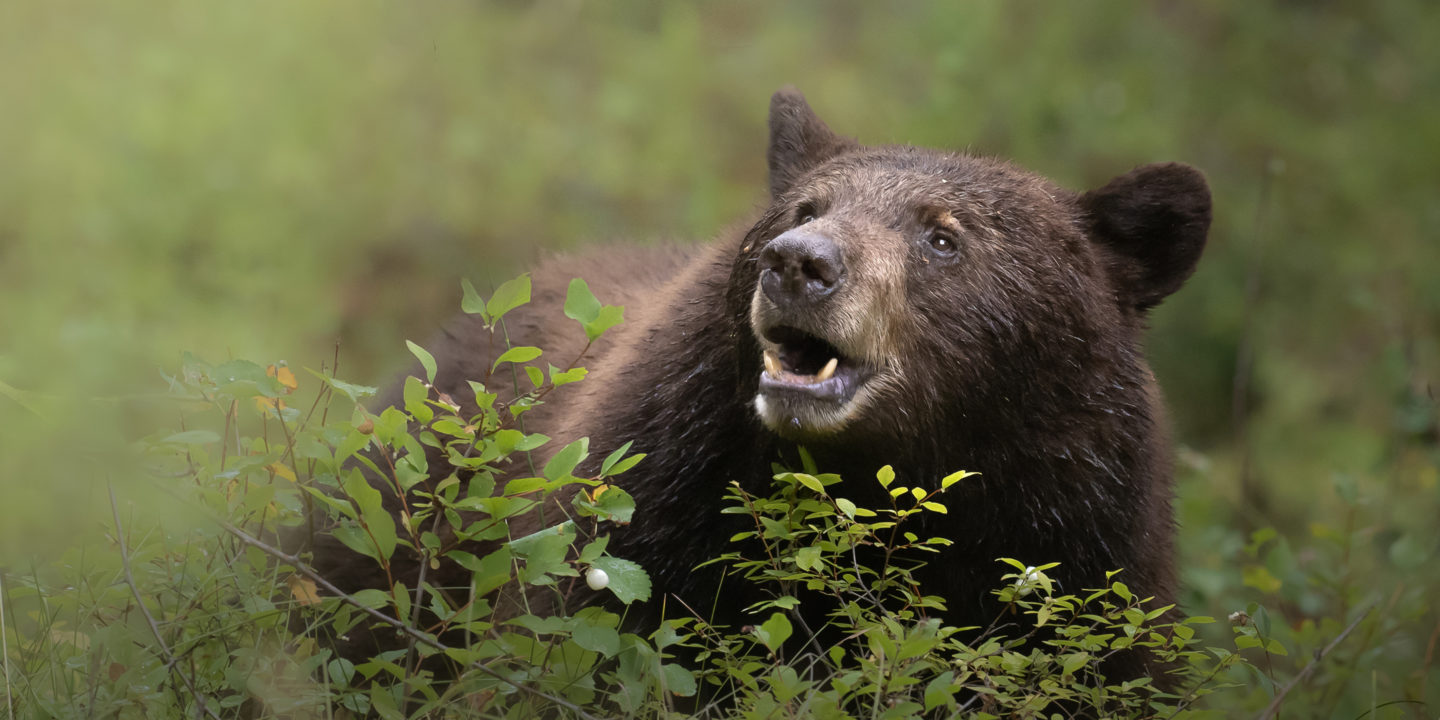
A helpful tip is to take a tour at the beginning of your trip so that you get the lay of the land and learn some tips and tricks for how to spend your following days. Both seasons are so different from one another, you’ll want to come back and experience each one! We’ll be here to offer you the finest wildlife tour that will take you right into the middle of the action. We can’t wait to see you there!
FAQs
Where is the best place to see wildlife in Jackson Hole?
One of the best places to see wildlife in Jackson Hole is the National Elk Refuge and the surrounding areas of Grand Teton National Park. These regions are home to a rich variety of animals, including elk, moose, bison, pronghorn, mule deer, bald eagles, and both grizzly and black bears. Early morning and evening are typically the best times for wildlife viewing, when animals are most active. For the best chance to spot a wide range of species in their natural habitats, joining a guided wildlife safari with local experts—like those offered by Jackson Hole Wildlife Safaris—can make all the difference.
What wildlife is in Jackson Hole, Wyoming?
Jackson Hole is home to an impressive variety of wildlife, making it a top destination for nature lovers. Visitors might encounter iconic species such as elk, moose, bison, mule deer, pronghorn, and both grizzly and black bears. The area also supports predators like mountain lions, wolves, and coyotes, along with a wide range of birds including bald eagles, hawks, and owls. Whether you’re exploring the valley floor, river corridors, or alpine forests, there’s always a chance to spot something wild in Jackson Hole.
Are there wolves in Jackson Hole?
Yes! There are wolves in Jackson Hole, especially in and around Grand Teton National Park. Since their reintroduction in the 1990s, several wolf packs have established themselves in the area. They play a key role in the local ecosystem and are most active around dawn and dusk. Joining a guided wildlife safari offers the best chance to spot them in the wild.
What predators can be seen on wildlife tours in Wyoming?
Wildlife tours in Wyoming often provide the chance to see a variety of predators in their natural habitat. These include wolves, coyotes, grizzly bears, and black bears. Mountain lions are also present, though rarely seen. While some are elusive, experienced guides know the best times and places to look—especially during early morning or evening hours—greatly increasing your chances of spotting these incredible animals.

